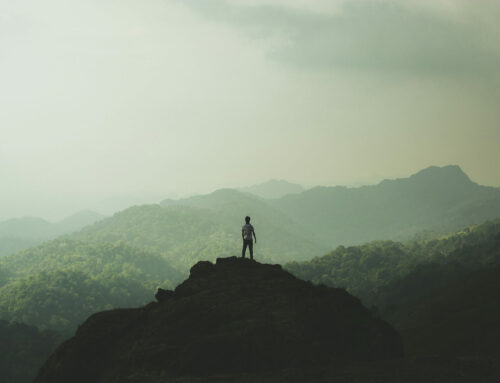“Since we can’t know what knowledge will be most needed in the future, it is senseless to try to teach it in advance. Instead we should try to turn out people who love learning so much and so well that they will be able to learn whatever needs to be learned.” – John Holt
Creativity is natural, it is obvious, it is innovative, it is disrupting, it is motivating, it is life. The creative education is not about only the art, or design like fashion design, apparel design or film making. It is about bringing creativity to education system itself. Starting from designing the curriculum, delivery method, the evaluation system up to grading system. Till now, all over the globe, the education system is running with prescription and designed purely based on requirement of certification or level of studies, not based on human aspiration for learning or societal need.
The purpose of education, in a democratic society is purely based on his or her interest to learn and scope for growth. The education sometimes contrasts with its outcome or results. The wind blows in spring and blows the pollen from one place to other and we see the cotton tree miles away from the original tree. The caterpillar, cocoon itself for months to have the shape and beauties of caterpillar. Everybody behaves as per the demand of nature and transform it with beauties, knowledge, strengths of muscle and mind. The aim of education lies with the building the generation with values and discipline.
The present formal system of education evolved in Europe for School and University 800-1000 years back for manifestation of talent present in a human being, particularly it focused on physical and psychological growth. Then they were free to choose their own subject of study and were focusing on that. There was complete freedom with the student to decide their subject, curriculum and time of studies. Very few students werte going to teacher to study and others were advised to study with their father. Slowly, formalization and massification of education made the system structured with fixed syllabus, time and execution mechanism for understanding of students and parents. The teachers taught the knowledge explored and executed in previous generations, experience gained by previous generation, without explaining the source, its connection with nature and its application. It was disconnected from the source and society, mostly it was human centric, based on human memory and intelligence without context.
Presently, we have realized that, the education should be designed irrespective of domain like engineering, management, medicine, social science, history, yoga, business etc. and different levels i.e. KG to PG. the creativity should be integral part of it.
Creative Education will mediate between traditional and technical space. With the domain knowledge of a particular discipline, where the student wants to develop his or her expertise, it will bring infusion of art, creativity, critical thinking and design to its purview in a playful way through small experiments, collaborations with peers to share the knowledge and auto refinement of thoughts through discussions. The scope for free thoughts will give space for free thoughts and reflective actions.
The values for creative education will be based on
Individual strengths, weaknesses for learning and experimentation
Passion to learn and get space for imagination
Curiosity to learn new things, new dimensions and innovate
Critical thinking to analyze the prospective, learn the source of technology or thoughts and make the plan to implement as per the requirement
Passion to get affiliated for the purpose of learning and develop space for imagination
Equanimity, Develop courage for future uncertainties
Embodiment recognition of body and society as the learning site
Empathy, power to think through others
Design Thinking, able to study the pattern on evolution of human aspiration from a particular field and on the basis of that should be able to design the future aspirations
Life Long Learning, connect to the source of knowledge and make learning as the way of life
Creative Education Approaches
The environment should be built up for creation with proper amalgamation of branch of studies and opportunities to create
Designing curriculum with scope for critical thinking and cognitive studies
Preparing delivery mechanism, to take the students through the journey of creativity and innovation
Evaluation should be based on understanding, design and application
Education should be connected with experiential learning like internships, research and innovation activities
India had a very respectable system of learning starting from vedic to post vedic period and established the institutions like Takshila and Nalanda, where the students from 40 – 100 countries came to get education.
The Vedic system of education has always been respected all over the globe because of its fundamental principles of developing personalities with strong discipline, psychological and moral health, infusion of spiritual and religious values, Civic Responsibility and Social Values, preserving and diffusing national culture etc. This system was following rituals to create the sensibility among the disciples and system, so it was starting with Upnayan, and finished with Samvartan. The teacher and students were coming together for a particular period for particular purpose and contributing with full devotion. The study was based on predominantly Veda, with Upanishada, Bhagbat Gita, Arthashastra by Chanakya, Medicine education by Charaka and Susruta, Mathematics by Aryabhatta etc. Teacher and students were learning together, for benefitting the disciple. The focus of education was realization of self and liberation of soul from chains of life, it was not preparation for life.
In post Vedic Period also the focus of education was always salvation, may be Brhmanak Education or Buddhist Education, everywhere the education mostly was based on Veda. The ten year of studies were divided in to two parts, primary about language and arithmetic and secondary about philosophy, Ayurveda and military.
In the present context, the Institutions should be developed as an social institutions, with all opportunities for creation of social perceptions and interest. The information or statements gained in isolation can be experimented for creation of new knowledge. The environment inside the institution and outside the institution should be properly bridged to support the learning outside the institution and it forms a character for continuous learning.
MORE POSTS
7 Comments
ABOUT

Sasmita Samanta
Prof. Sasmita Samanta is an accomplished academician and administrator with more than two and half decades of experience in strategizing excellence in professional and technical education. Currently she wears the mantle of Professor of Management and Vice-Chancellor of KIIT Deemed to be University.






Excellent article on education system.
Prasanta
Thanks for sharing such a good blog.
It is always appreciative what one achieves through one's own creativity. Such achievement is a never ending Bank Account. There is hell and heaven difference between LITERATE & EDUCATE. The script has been bestowed with a number of annotations that bring both teaching-learning environment simultaneously. Also, it denotes what is the hidden reason for which Hon'ble Founder, KIIT Group of Institutions, pays attention towards EDUCATION. I would put all my thankfulness to the writer for such a mind blowing elaboration.
Creativity is required to create Creative Education or Creative Learning. The author's lucid description on how creativity can be used to come up with planning and learning solutions is worth a read. An environment fostering creative education should work on development of skills pertaining to team work, activity based curriculum and active learning methodology, creating a personal learning environment and giving them opportunity to independently think and make decisions, concept of analogy and to some extent counterfactual thinking. The author's correlation with history and vedic concepts always helps to relate and understand better. Great Reading…
Truly described by the author in the article: Education should be connected with experiential learning like internships, research and innovation activities. Impact of teaching should be blended with project based and research based learning to this new generation students to make it more influential and creative. (Dr Ashok Kumar Sahoo).
Creative learning is when students are able to use their imagination and form ideas.Author is focusing on the increasing interest in the creative education which need critical thinking. This is only possible when students have more say on their education and then only they become more engaged what they were doing which will help and facilitate learning in a more meaningful way. Another blog full of innovative thinking and syllabus in universities may also be available to facilitate students to go creative.
Very Interesting. Your write ups always inspires.